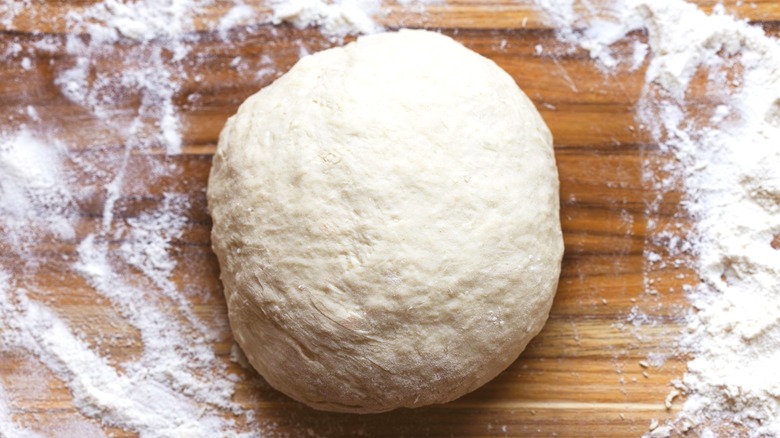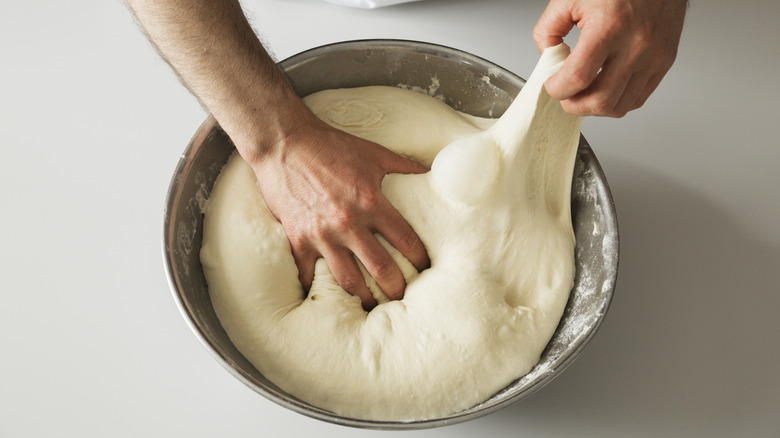Here's How To Know When Your Bulk Fermentation Is Done
It has been five years since the pandemic had everyone wondering when to throw out sourdough starter — or bake bread with it — and the trend is still going strong. I'm sure the price of groceries, among other things, is keeping people steady in the homesteading mentality, but it's still impressive seeing so many home cooks become their own boulanger, expertly nailing the perfect score for a sourdough loaf. Of course, for a great sourdough loaf, you've gotta know when your dough's completed its first rise.
Bread baking is not an easy job for newcomers, as it involves more of a science in knowing the tell-tale signs for how your bread is coming along, instead of an exact recipe like with other baking. Many environmental factors, such as the humidity in the air and the temperature of your kitchen, can alter the texture of your dough, particularly in regard to bulk fermentation — a technical term for when you leave your yeasted dough to rise.
Once you know what to look out for, the process becomes much more natural and easy to follow. When your bulk fermentation is complete, your dough should be slightly domed from the buildup of gas. The texture will be light and flexible, and the dough should come free from the sides of the bowl easily. Learn to read the signs of proper bulk fermentation for sourdough and you'll be churning out loaves like a bakery, with ease.
Reading the sourdough signs
An experienced sourdough baker can intuitively spot the signs to know how a dough is coming along — even without a recipe. One of the most important steps in baking bread is bulk fermentation, just after mixing your dough, where yeast and good bacteria create the gas to leaven the dough before you shape it and bake it. But you can't rely on an arbitrary timeframe when dealing with bulk fermentation; Bread dough is temperamental and can be greatly affected by environmental factors. Instead, the dough will tell you when your bulk fermentation is done.
The first thing you will notice is that your dough should be slightly domed from all the gas built up from the yeast. When you touch the dough with dry fingers, the top will be slightly tacky, but it should not stick to your hands. If you used a clear glass bowl, you should be able to see an array of bubbles on the underside of the dough, as well. And if you were to tilt the bowl to one side, the dough should fall away from the sides cleanly. As long as all these signs are visible, you should be able to celebrate the unique flavor of sourdough bread by baking up some deliciously fluffy results.

